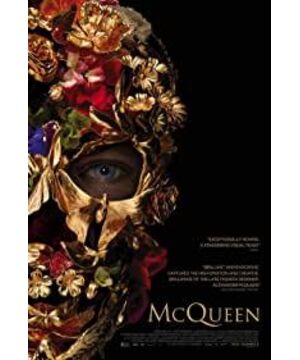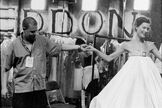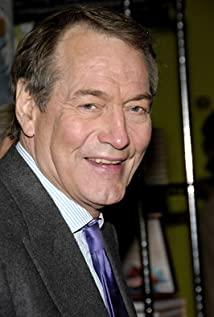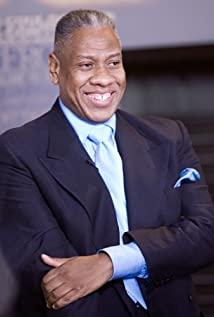For the convenience of description, when Westwood and McQueen are used below, they refer to movies; when Westwood and McQueen are used, they refer to characters. After careful consideration and analysis, the McQueen rating was raised from four to five stars, and Westwood kept the three-star rating unchanged to show the gap.
After watching Westwood and McQueen several times respectively, watching the two films in Broadway on the evening of November 1st made me new discoveries.
Due to the special nature of the work of the hand subtitler, and the two films are documentaries with dense English dialogue (with more than 1,300 lines of subtitles and more than 2,200 lines of subtitles respectively), I chose " listen to the movie " instead of " "Watching a movie" method-in order to knock out the subtitles accurately, I can only stare at the script (script) displayed on the computer screen all the way, and type each line on the subtitle machine entirely by listening. As a result, my viewing process degenerated into a semi-auditory experience (after the light was still on the big screen), but focusing on the script reading allowed me to clearly think about the similarities and differences and the pros and cons of the two films .
First of all, these two new films are inherently suitable for comparison. The curator of the European Union Film Festival arranged for them to be screened on the same day. This is also an interesting and useful comparison . They have too much in common: they are all documentaries (biographical); the main body takes the form of interviews, supplemented by historical pictures and videos; the protagonists are all famous fashion designers, and they all come from the UK. What's even more amazing is that each of the two films has a line referring to each other.
But their specific effects are completely different. Only from the audience's reaction on November 1st-Westwood's screening was at the prime time of 7pm, but there was no audience applauding after the screening; and McQueen had already ended. Nearly eleven o'clock in the evening, everyone responded with warm applause after the end of the film, and weeping from time to time was heard on the scene towards the end. Although I can't simply judge whether the film is good or bad based on applause or not, the audience's reaction can already explain a certain problem.
The feasibility of horizontal and vertical contrast, unconscious intertextuality, differences in film effects, and the nature of my work make this interpretation unable to separate the two films. I hope that the following can go beyond the simple judgment of one praise and one criticism, and find a more reasonable method of constructing biographical documentaries in specific comparisons.
Structural decision
Westwood's structure is topical , and each small paragraph that is not clearly divided tells the protagonist's experience, such as punk trends, caring for the environment, emotional life, etc. But the connection between the paragraphs is minimal. In other words, they are isolated islands, fragments of countless information, rather than blocks of masonry.
Of course, the creators try to convey emotions (from the characters, from the film) to the audience by relying on typographical techniques, such as cutting into the "disgust" of the West Queen Mother herself for interviews many times. The creator intends to use this structural trick to reflect the rebellion of the Queen Mother, and at the same time show the sense of humor and alienation caused by the contrast, making the audience smile knowingly. However , this kind of rescue is powerless or even futile when the overall structure is disorganized. Is it possible for a prose structure to make a character documentary great? I can't think of a positive case for the time being.
At the end, the image of the Queen Mother is still labelled, and labelling means blurring. In the eyes of audiences who do not know her or understand her from the media, this image is obviously lacking in persuasiveness and lack of memory. The labelled image is the external image and the imaginary image, not the internal image and the real image. It is undoubtedly a pity that the creator is so close to the character but gave up going deep. The subtitle of this film is Punk, Icon, Activist (punk, idol, activist), which can also be seen as a statement of labeling techniques .
As a fashionable old lady, the Queen Mother is still in the context of curiosity and fashion, far away from the general public, and exists in movies as a popular symbol rather than a flesh and blood person. What is her struggle? How does she display her talents? Why did she succeed? The film did not give a response, but was only satisfied with the superficial enrichment, and eventually became a pile of materials.
After watching McQueen, an emotional frenzy will sweep every audience. To calm down and analyze its structure is nothing more than chronology, and divide several important "shows" in his life into different "tapes" in chronological order. This method is simple but very effective . The reason is that the choreographer deeply digs into the connotation behind each "show" and the creative process, thereby revealing the changes in McQueen's character and state. McQueen's pain and the cause of the pain were unobstructed in front of the audience.
In addition to letting the audience understand the protagonist McQueen, the film also attempts to extend the main body of expression to the fashion industry. In other words, McQueen is the dominant protagonist, and Fashion Business is the hidden protagonist. Through the most direct and powerful images and descriptions of key figures, the creator successfully demonstrated the charm of fashion and confirmed that fashion is a branch of art. This is the ambition of the film, it is a natural and unconsciously revealed, but it will never be overwhelming.
——Seeing the picture of the No. 13 series robot spraying paint on the model, did you "shed tears for the first time" on the show like McQueen, and realized the beauty of fashion? The show is no longer a Vanity Fair at this moment.
——Seeing the final scene of the Voss series (a fat woman surrounded by moths), do you better understand McQueen's harsh and avant-garde critique and irony of the fashion industry ("The fashion industry is sometimes superficial")? This voice is extremely precious because it comes from within.
——Seeing the model in the Scanners series who is struggling with the wind, can you feel McQueen's deep loneliness? He dedicated his entire life to work.
In Westwood, the images of each show were broken into montages, and turned into floating shadows. The scene of the catwalk is reduced to a simple display, without a background story and lack of in-depth thinking. This is a serious waste, laziness in creation, and even deviation from documentary concepts. The different treatment methods for this important element make the film stand up to the judgment.
Interview skills (/location of materials/depth of topic)
When two films adopt the same method (interview a specific object, guide them to speak and cut out questions) but achieve different results, the interview skills and the placement of interview materials have become issues worthy of attention.
If the audience knows the end of the lives of these two designers, they will definitely find it more difficult to photograph McQueen—because they have passed away, they cannot obtain first-hand information through interviews. But this worry was soon proved to be unnecessary. As a public figure, McQueen left a lot of video materials during his lifetime, including TV interviews and DV videos taken by himself. So the creator's problem or thinking point is transformed into: how to organically combine existing materials with fresh interviews . McQueen was finally constructed according to McQueen's own creation ("The original documentary about Alexander McQueen-McQueen's video tape"). McQueen's confession runs through the film and becomes the finishing touch.
At the same time, the audience also found that in McQueen, the mood of the interviewee was full of changes (mostly from relaxed to dignified), and the scene of the shot also changed (alternating close-up and close-up), which undoubtedly further magnified the mood. Because the interview scene remains the same, and the subject's clothes and dress are the same, I boldly guess that the creator only interviewed everyone once, but each interview captured quite effective information, which was able to be scattered throughout the film. . The correct guidance of the interviewer is an important factor that cannot be ignored in the success of the film.
On the other hand, Westwood has hardly used any historical interviews with the Queen Mother of the West, relying too much on the protagonist's current self-report (there is reason to suspect that the way the film is constructed is also affected by the content of her self-report). However, most characters have a single emotion when facing the camera most of the time, and the appearance of the film (in a narrow sense, refers to the expression of the characters) lacks ups and downs, which congenitally reduces the possibility of the film's inner (theme) in-depth. Speaking harshly, the creators seem to have completely abandoned their willingness to move people with affection. So what is the point of shooting a documentary?
Both are legends in the fashion industry, both have outstanding talents, and are proactively tested, and thus both have achieved success in the secular sense. But their life ends are completely different- one is a dead legend, the other is a living legend; one is a self-destructing genius, and the other is a reconciling genius. McQueen told you the cause of McQueen's tragic fate, but Westwood didn't, and ended the film with everyone's unanimous praise.
I once thought that death crowned McQueen, thereby reducing the legendary nature of the Queen Mother, leading to a different perception of the two films, but I soon realized the naivety of this idea and disrespect for the deceased. As one of the endings of the story, death does not have a decisive power. The process of revealing this ending is important-the process is the movie, the result is the news. Empathy is the highest state pursued by art works.
//The sound field of watching movies
Due to the work needs mentioned in the previous article, I have watched two movies online and offline many times, and I am basically listening in the theater environment. As far as the auditory experience is concerned, McQueen is also slightly better.
The majestic, tragic soundtrack seems to have set the tone for the movie from the first second. The emotional soundtrack is often pasted under the interview soundtrack, which makes the movie head to the sea of sorrow, to the crazy and fragile heart of the genius, and to the complex truth of life.
I therefore remembered a line in "The Thirteen Lang of Nanhai" I had seen some time ago:
"Don't think that you are a genius. A true genius has only two endings, one is to die early; the other is to go mad and end in tragedy. Because a genius will never compromise with the world."
Interestingly, the two trailers (one long and one short) of this year's EU Film Festival chose the main soundtrack of the two films respectively. I have found a basis for the "reasonability" of this interpretation.
By the way, observing (listening) the reaction of the audience has become a great pleasure of my work as a subtitler. For viewers who do not understand foreign languages, subtitles are the key to their understanding of the film. The appearance and duration of subtitles will undoubtedly affect the transmission of emotions.
Shamelessly speaking, I "manipulate" the emotions of the audience. At the moment when I pressed the mouse, I heard the laughter in the audience and their sobbing. At that time, I realized the artistry of the action of knocking on the subtitles . Everyone can have a happy life only if they realize the importance of their work. This is the real answer to " Why Should I Be a Subtitler ".
At the same time, I also discovered another interesting phenomenon. For "cinemaists" (that is, proclaiming that a movie can only be seen in a movie theater), the choice of which time to watch the movie will also affect the experience of the movie-the quality and emotion of the audience in different scenes The ability to recognize is different, but what kind of audience you encounter depends entirely on luck. This phenomenon will be a small blow to the fundamentalist position-whether watching a movie in a theater is really important, but it is not the key. The key is whether you can eliminate the interference of the outside world and open up all your senses when watching the movie-only then can it be regarded as "true" Have seen the movie. I personally witnessed Westwood’s two Broadway screenings. In the first show, the audience laughed more and were more sensitive to the creator’s careful reflection. Different people have different opinions as to whether a warm response is better or a quiet response is better.
View more about McQueen reviews










